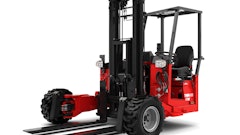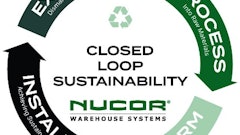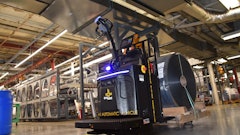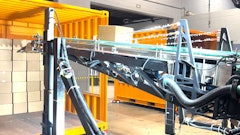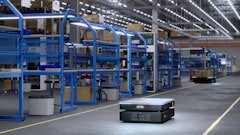What's the next diet craze? Get ready for the low carb diet—as in low carbon. Bon Appetit Management Corp. has invented a low carbon diet to reduce its own greenhouse gas emissions, as well as those of its customers.
The company, an onsite restaurant management company that provides cafe and catering services to universities, corporations and special venues, is encouraging chefs and diners to think about how their food choices can help ease the climate crisis.
Bon Appetit joins a growing number of food, beverage and consumer goods companies that have figured out that being "green" is one way to win the consumer's heart—and now stomach. As it turns out, food and the energy it takes to make it is one of the largest human activities contributing to global warming. The company sites a survey that found that the average American creates 2.8 tons of CO2 emissions each year by eating. That's more than the 2.2 tons each person generates by driving.
Bon Appetit is taking a radical approach to environmental sustainability, but its Low Carbon Diet is food for thought. It includes:
- Reducing the use of beef by 25 percent—livestock production is responsible for 18 percent of greenhouse gas emissions;
- Sourcing all meat and poultry from North America—80 percent of the energy used by the food system comes not from growing food, but from transporting and processing it;
- Sourcing nearly all fruits and vegetables from North America, using seasonal local produce as a first preference and using tropical fruits only as "special occasion" ingredients. Most bananas have traveled 3,000 miles in high-speed reefers to reach an American breakfast plate. A local apple might be grown within 10 miles;
- Serving only domestic bottled water and reducing waste from plastic bottles—Americans throw away 40 million plastic water bottles every day;
- Reducing food waste—a goal of 25 percent reduction in three years or less;
- Auditing the energy efficiency of kitchen equipment—in home or commercial kitchen energy losses of up to 30 percent can be corrected.
Should your company go a low carbon diet? In this month's special supplement "It's A Green World After All" [page 23], we focus on five key areas where best practices can help reduce a company's carbon footprint: facility design; pallets and containers; lift trucks; packaging; and technology.
This type of a diet is not only good for the environment, but it's good for the wallet, too. And that's a diet we can all live with.













